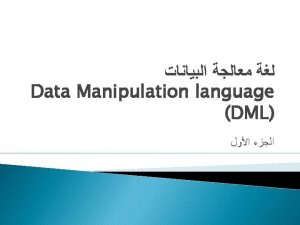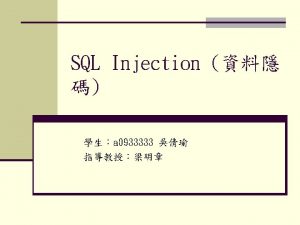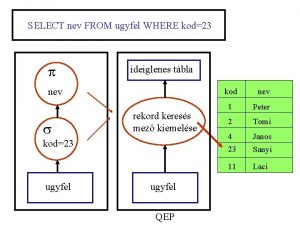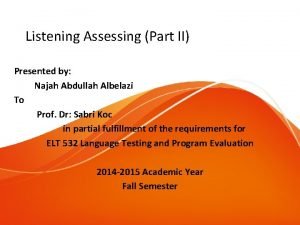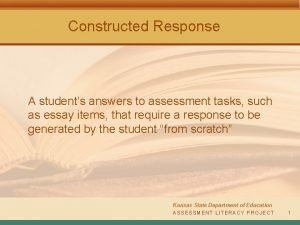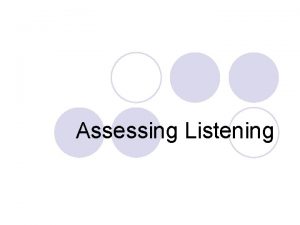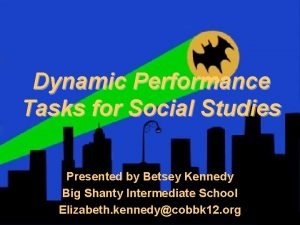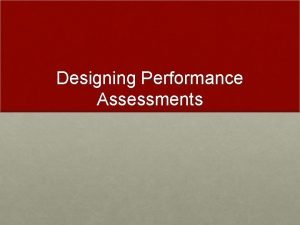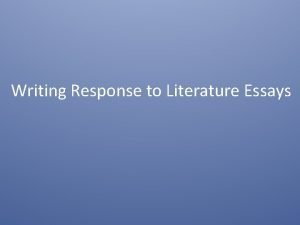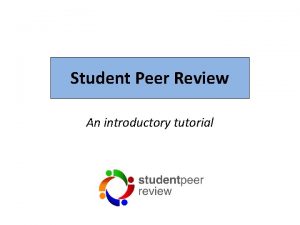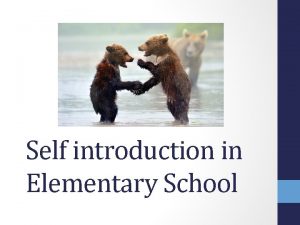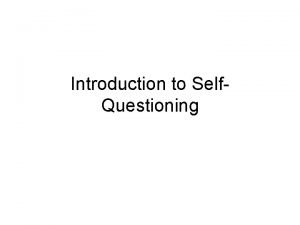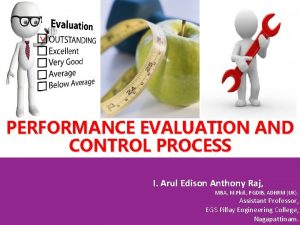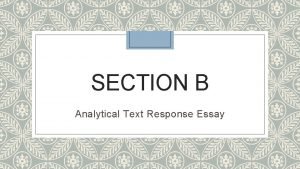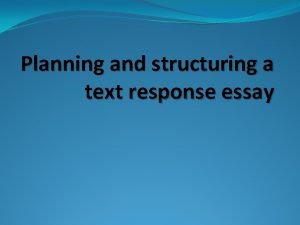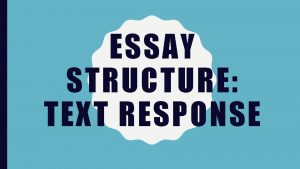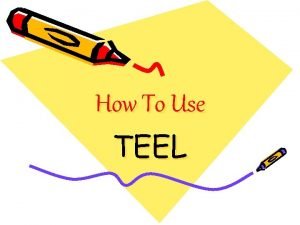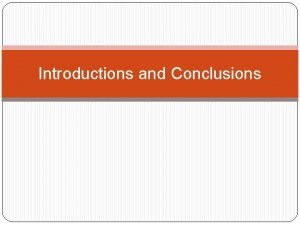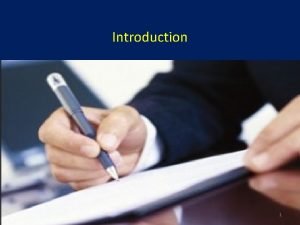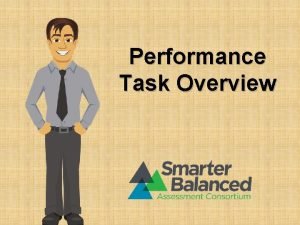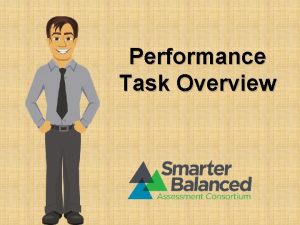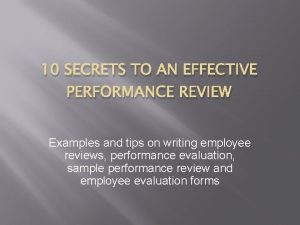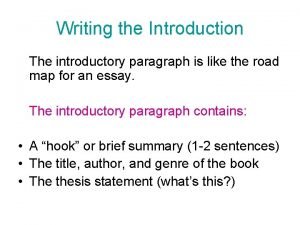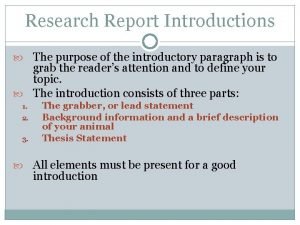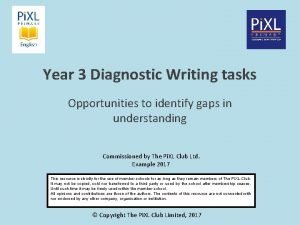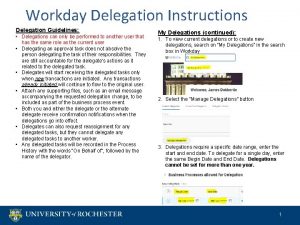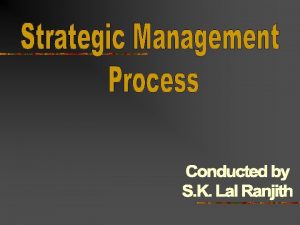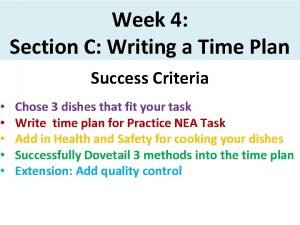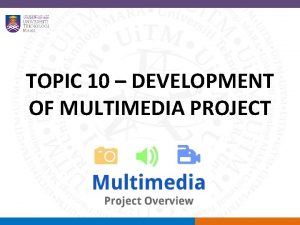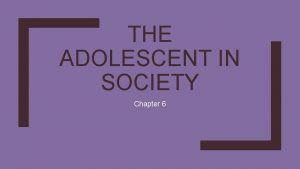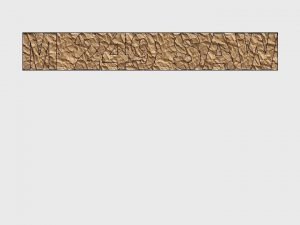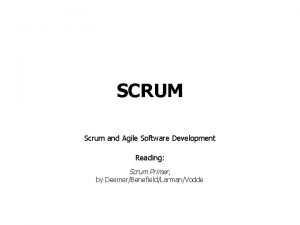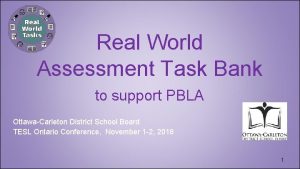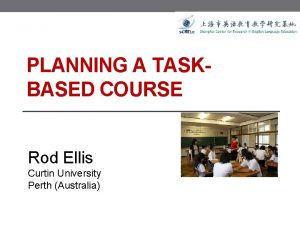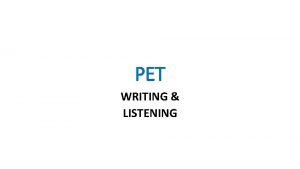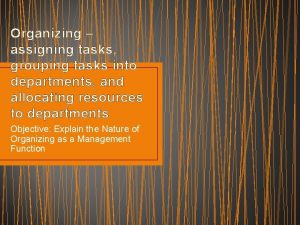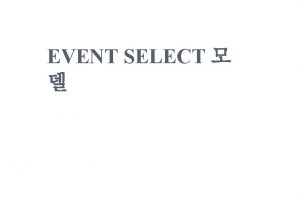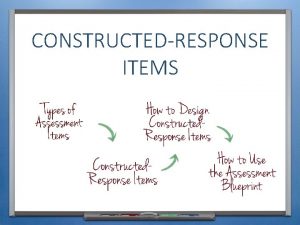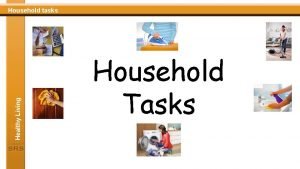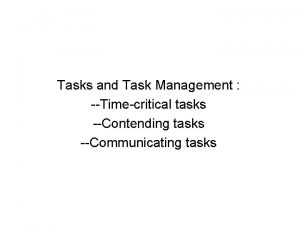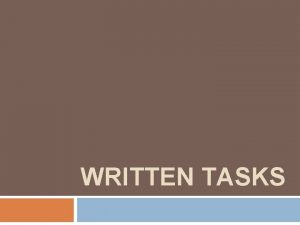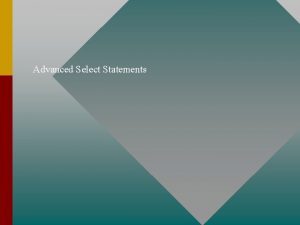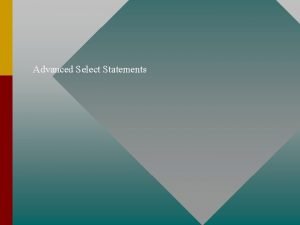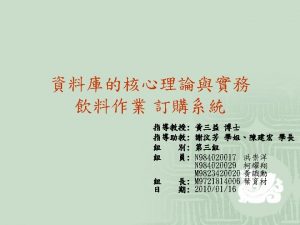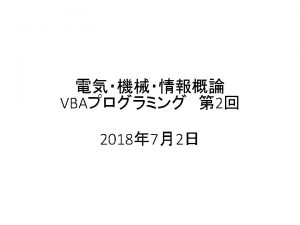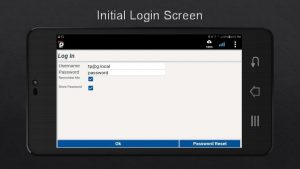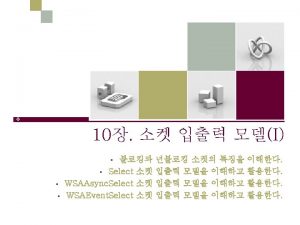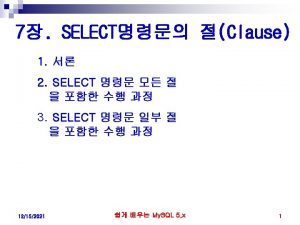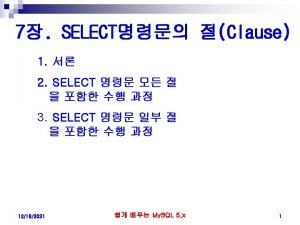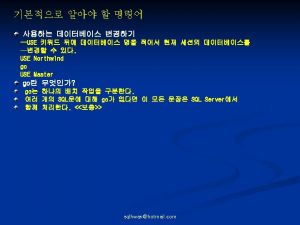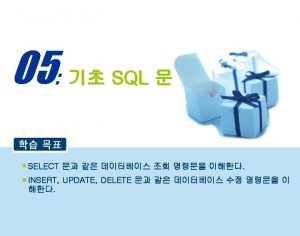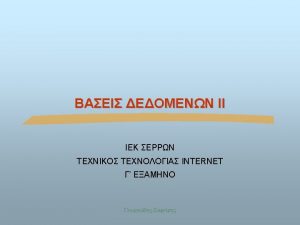PERFORMANCE TASKS INTRODUCTION PURPOSE Students select a response





















































- Slides: 53

PERFORMANCE TASKS

INTRODUCTION & PURPOSE Students select a response Students construct a response Students create products or perform tasks to show their mastery of a particular skill

INTRODUCTION & PURPOSE Define what a PERFORMANCE TASK item is List a VARIETY OF PERFORMANCE TASKS Identify the BENEFITS and CHALLENGES of performance tasks Know that there is a WHAT-WHO-HOW FRAMEWORK that you can use to design performance tasks Use the ASSESSMENT BLUEPRINT to design assessment items

KEY CONCEPTS

KEY CONCEPTS

KEY CONCEPTS Students select a response Sources: Kansas State Department of Education, Assessment Literacy Project; Ohio Department of Education, “How to Design and Select Quality Assessments; ” Relay Graduate School of Education, Designing and Evaluating Assessments (2014); Rhode Island Department of Education, “Deepening Assessment Literacy. ”

KEY CONCEPTS Students construct a response Sources: Kansas State Department of Education, Assessment Literacy Project; Ohio Department of Education, “How to Design and Select Quality Assessments; ” Relay Graduate School of Education, Designing and Evaluating Assessments (2014); Rhode Island Department of Education, “Deepening Assessment Literacy. ”

KEY CONCEPTS

KEY CONCEPTS Students create products or perform tasks to show their mastery of a particular skill Sources: Kansas State Department of Education, Assessment Literacy Project; Ohio Department of Education, “How to Design and Select Quality Assessments; ” Relay Graduate School of Education, Designing and Evaluating Assessments (2014); Rhode Island Department of Education, “Deepening Assessment Literacy. ”

KEY CONCEPTS

KEY CONCEPTS

KEY CONCEPTS

KEY CONCEPTS Students perform a task to demonstrate a particular skill

KEY CONCEPTS • Performance tasks place student demonstration of ability at the center of assessment • Performance tasks approximate real-world application of complex skills • Allow students to actively demonstrate their learning and skills

KEY CONCEPTS

KEY CONCEPTS

KEY CONCEPTS

KEY CONCEPTS • Performance tasks place student demonstration of ability at the center of assessment • Performance tasks approximate real-world application of complex skills • Allow students to actively demonstrate their learning and skills • Performance tasks can measure abilities beyond academic knowledge and skills • Performance tasks are typically more engaging for students

KEY CONCEPTS • Performance tasks can be time-consuming to design and score in a consistent and unbiased manner

KEY CONCEPTS

KEY CONCEPTS Written Group Parameters Physical Individual Timing Verbal Visual Communication

KEY CONCEPTS Written Group Parameters Physical Individual Timing Verbal Visual Communication

KEY CONCEPTS Written Group Parameters Physical Individual Timing Verbal Visual Communication

KEY CONCEPTS Written Group Parameters Physical Individual Timing Verbal Visual Communication

KEY CONCEPTS Assessment Item # ITEM ANSWER KEY, SCORING GUIDE OR RUBRIC

KEY CONCEPTS Students create products or perform tasks to show their mastery of a particular skill

KEY CONCEPTS scoring guides scoring tools that assign points to different levels of student performance → a → b 2 points: ____________________________ 1 point: ____________________________ 0 points: ____________________________ Exemplar answer: ________________________________________________________________

KEY CONCEPTS rubrics scoring tools that articulate levels of performance in relation to standards or other expectations

KEY CONCEPTS


KEY CONCEPTS

KEY CONCEPTS

KEY CONCEPTS Sources: Ohio Department of Education, “Ohio’s New Learning Standards: English Language Standards” (2010); Student Achievement Partners, “Mini-Assessment for Who Was Marco Polo? by Joan Holub and The Adventures of Marco Polo by Russell Freedman” (2014).

KEY CONCEPTS

KEY CONCEPTS 1. Primary Purpose of the Assessment Summative 2. Standard(s) (one per row) 3. Skill(s) (one per row) 4. Level(s) of Rigor 5. Possible Type(s) of Items Reading Informational Text 1: Quote accurately from a text when explaining what the text says explicitly and when drawing inferences from the text. Quote accurately from the text (explicitly and making inferences). 1 SR Identify main ideas and Reading Informational Text 2: Determine two or more main ideas of a text and explain how key details support how they are supported by key details; summarize the text. them. 2 CR Reading Informational Text 4: Determine the meaning of general academic and domainspecific words and phrases in a text relevant to a grade 5 topic or subject area. Determine the meaning of new vocabulary words. 2 SR Reading Informational Text 8: Explain how an author uses reasons and evidence to support particular points in a text, identifying which reasons and evidence support which point(s). Explain how the author uses evidence to support his or her claims. 4 CR Write an opinion piece on texts. 5 CR, PT Support your point of view with evidence. 5 CR, PT Level(s) of Rigor # of Points % of Assessment Writing 1: Write opinion pieces on topics or texts, supporting a point of view with reasons and information. 6. Write and/or Select Assessment Items Item # TOTAL Standard(s) and/or Skill(s) Type of Item

KEY CONCEPTS 6. Write and/or Select Assessment Items Item # Standard(s) and/or Skill(s) Type of Level(s) # of % of Item of Rigor Points Assessment 1 Determine the meaning of SR-MC new vocabulary words. 2 Quote accurately, identify CR 1– 4 main ideas and explain Short how the author uses Answer evidence. TOTAL 1– 3 5 12

KEY CONCEPTS 6. Write and/or Select Assessment Items Item # Standard(s) and/or Skill(s) Type of Level(s) # of % of Item of Rigor Points Assessment 1 Determine the meaning of SR-MC new vocabulary words. 2 3 TOTAL 1– 3 5 14 Quote accurately, identify CR 1– 4 main ideas and explain Short how the author uses Answer evidence. 12 34 Write an opinion, and PTsupport your point of view. Essay 18 51 35 100% 5

KEY CONCEPTS Assessment Item #3 ITEM ANSWER KEY, SCORING GUIDE OR RUBRIC

KEY CONCEPTS Assessment Item #3 ITEM Using information from both sources, the excerpt from Chapter 11 of Who Was Marco Polo? by Joan Holub and the excerpt from The Adventures of Marco Polo by Russell Freedman, write an essay in which you provide an opinion that either Marco Polo told the truth in his book or Marco Polo made up his stories. Your audience is your classmates from your history class who have learned about Marco Polo. Be sure to use information from both of the texts to support your opinion. Write your essay in the space below. Sources: Student Achievement Partners, “Mini-Assessment for Who Was Marco Polo? by Joan Holub and The Adventures of Marco Polo by Russell Freedman” (2014).

KEY CONCEPTS Assessment Item #3 RUBRIC 3 Points 2 Points 1 Point 0 Points Reading: Comprehension of Key Ideas and Details Writing: Written Expression Writing: Knowledge of Language and Conventions Source: PARCC, Grades 4 and 5 Condensed Scoring Rubric for Prose Constructed Response Items (2013).

KEY CONCEPTS Assessment Item #3 RUBRIC 3 Points 2 Points 1 Point 0 Points Reading: Comprehension of Key Ideas and Details Writing: Written Expression Writing: Knowledge of Language and Conventions Source: Ohio Department of Education, “Ohio’s New Learning Standards: English Language Standards” (2010).

KEY CONCEPTS Assessment Item #3 ITEM Using information from both sources, the excerpt from Chapter 11 of Who Was Marco Polo? by Joan Holub and the excerpt from The Adventures of Marco Polo by Russell Freedman, write an essay in which you provide an opinion that either Marco Polo told the truth in his book or Marco Polo made up his stories. Your audience is your classmates from your history class who have learned about Marco Polo. Be sure to use information from both of the texts to support your opinion. Write your essay in the space below. RUBRIC 3 Points Reading Comprehension Writing 2 Points 1 Point 0 Points

KEY CONCEPTS 3 Points Reading Comprehension: Key Ideas and Details provide an accurate analysis and support the analysis with effective textual evidence Writing: Written Expression write in a style appropriate to their audience and use relevant, textbased evidence to address the prompt Writing: Knowledge of Language and Conventions 2 Points 1 Point 0 Points

CHECK FOR UNDERSTANDING

CHECK FOR UNDERSTANDING Define what a PERFORMANCE TASK item is List a VARIETY OF PERFORMANCE TASKS Identify the BENEFITS and CHALLENGES of performance tasks Know that there is a WHAT-WHO-HOW FRAMEWORK that you can use to design performance tasks Use the ASSESSMENT BLUEPRINT to design assessment items

CHECK FOR UNDERSTANDING

CHECK FOR UNDERSTANDING 1. List a variety of performance tasks, either repeating those listed earlier in this module or using those you come up with on your own or in teams.

CHECK FOR UNDERSTANDING 1. List a variety of performance tasks, either repeating those listed early in this module or using those you come up with on your own or in teams.

CHECK FOR UNDERSTANDING 1. List a variety of performance tasks, either repeating those listed early in this module or using those you come up with on your own or in teams. A kindergarten teacher asks a student to count from 1 to 30 or say her ABCs. A first-grade teacher asks her students to read a passage out loud from a book. A fourth-grade physical education teacher asks her students to demonstrate skills they have developed during a unit on jumping rope. An eighth-grade visual arts teacher asks his students to use different media to create sculpted figures that convey actions or gestures. A middleschool science teacher asks her students to complete experiments to demonstrate that they know how to apply the scientific method and how to use the scientific equipment that they will use to do more advanced experiments.

CHECK FOR UNDERSTANDING 2. Describe one benefit and one challenge of performance tasks.

CHECK FOR UNDERSTANDING 2. Describe one benefit and one challenge of performance tasks.

CHECK FOR UNDERSTANDING 2. Describe one benefit and one challenge of performance tasks. Performance tasks place student demonstration of ability at the center of assessment. They approximate real-world application of complex skills more closely than other types of items, and they allow students to actively demonstrate their learning and skills. On the other hand, performance tasks can be time consuming to design and score in a consistent and unbiased manner.

CONCLUSION
 Select * from select
Select * from select Nameadmin
Nameadmin Select * from select
Select * from select Select * from select
Select * from select Paraphrase recognition listening
Paraphrase recognition listening Selected response tasks
Selected response tasks The importance of listening in lang..
The importance of listening in lang.. Social studies performance tasks
Social studies performance tasks Define performance task
Define performance task Characteristic of performance task
Characteristic of performance task Why rizal called champion of filipino youth
Why rizal called champion of filipino youth Sql select performance
Sql select performance Natural and forced response
Natural and forced response Natural response circuit
Natural response circuit Primary immune response and secondary immune response
Primary immune response and secondary immune response What is the purpose of a response to literature essay
What is the purpose of a response to literature essay Best introduction lines for students
Best introduction lines for students Self introduction for elementary students
Self introduction for elementary students Self introduction for students in school
Self introduction for students in school Performance appraisal purpose
Performance appraisal purpose Behaviorally anchored rating scales
Behaviorally anchored rating scales Performance appraisal process
Performance appraisal process On purpose sentence
On purpose sentence Jcids manual
Jcids manual Specific purpose statement
Specific purpose statement Text response essay structure
Text response essay structure Text response introduction example
Text response introduction example Text response essay structure
Text response essay structure Summary response essay example
Summary response essay example How to use teel
How to use teel Purpose of conclusion
Purpose of conclusion Purpose of introduction
Purpose of introduction Uses of high performance liquid chromatography
Uses of high performance liquid chromatography Performance task introduction
Performance task introduction Performance task introduction
Performance task introduction High performance liquid chromatography introduction
High performance liquid chromatography introduction Performance review introduction example
Performance review introduction example Example of introductory paragraph with thesis statement
Example of introductory paragraph with thesis statement Purpose of introduction
Purpose of introduction Machinarium playtime
Machinarium playtime Request delegation change in workday
Request delegation change in workday Quotes on cunning people
Quotes on cunning people Dovetail time plan
Dovetail time plan Depict all the tasks along a timeline
Depict all the tasks along a timeline Developmental tasks for adolescent
Developmental tasks for adolescent Task conditions and standards form
Task conditions and standards form Choose one of the tasks
Choose one of the tasks Product backlog example pdf
Product backlog example pdf Real world assessment task bank
Real world assessment task bank Focused and unfocused tasks examples
Focused and unfocused tasks examples Pet writing sample
Pet writing sample Ma pal task 1 examples
Ma pal task 1 examples Psychosocial tasks
Psychosocial tasks Job description of grouping task into department
Job description of grouping task into department
